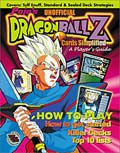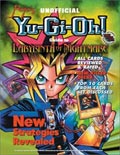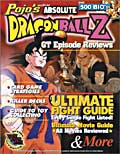|
|
||||||||||||||||||||||||||||||||
|
|
||||||||||||||||||||||||||||||||
|
|
||||||||||||||||||||||||||||||||
|
|
|
|
||||||||||||||||||||||||||||||
 |
||||||||||||||||||||||||||||||||
 |
|
 |
||||||||||||||||||||||||||||||
|
|
||||||||||||||||||||||||||||||||
Nintendo Tips
Trading Card
Game
Deck
Garage
Cartoon/Anime
Advertise With Us
|
Pokemon-e TCG EX Basic Rules What Do You Need to Play?
Back to Top Starting the Game
Back to Top Energy Symbol Key
Back to Top Playing the Game Playing the Pokémon-e Trading Card Game is easy! Here's how it's done: DRAW a card. You begin your turn by drawing a card. (If your deck is empty at the beginning of your turn so you can't draw a card, the game is over, and your opponent wins.) When you start a new game, the player who goes first skips drawing his or her first card. Now DO ANY of these you want in whatever order you want: PUT Basic Pokémon cards on the Bench (as many as you want). Choose a Basic Pokémon card from your hand and put it face up on your Bench. You can have no more than five Pokémon on your Bench at any time, so you can put a new Basic Pokémon card there only if your Bench has four or fewer Pokémon on it. If your Active Pokémon gets Knocked Out (or leaves play for any other reason), you have to replace it with a Pokémon from your Bench right away (or you lose the game). EVOLVE Pokémon (as many as you want). If you have a card in your hand that says "Evolves from so-and-so" and so-and-so is the name of a Pokémon you already have in play, you may play that card in your hand on top of the Pokémon so-and-so. This is called "evolving" a Pokémon. Example: Jake has a card called Grovyle that says "Evolves from Treecko," and he has a Treecko card in play. He may play the Grovyle card on top of the Treecko card. You may evolve a Basic Pokémon to a Stage 1 Pokémon, or a Stage 1 Pokémon to a Stage 2 Pokémon. When a Pokémon evolves, it keeps all cards attached to it (Energy cards, Evolution cards, etc.) and any damage it might already have, but the old attacks and Poké-Powers and Poké-Bodies of the Pokémon it evolved from go away. All other things about the Pokémon go away, such as Special Conditions or anything else that might be the result of an attack some Pokémon made earlier. Note: You can't evolve a Pokémon that you just played or evolved on that turn. Also, neither player can evolve a Pokémon on the first turn. And finally, yes, you can evolve a Pokémon on your Bench - that counts as "in play"! ATTACH 1 Energy to one of your Pokémon (only once per turn). Take an Energy card from your hand and attach it to one of your Pokémon in play, either your Active Pokémon or one of your Benched ones, but NOT both (put it under the Pokémon card). Unlike most of the other things you can do during your turn, you may do this only once during your turn. Also, remember that you can attach an Energy card to a Pokémon on your Bench. After all, that's "in play," too! PLAY Trainer cards (as many as you want). When you want to play a Trainer card, do what it says, then put it in the discard pile. You may play only one Supporter card and only one Stadium card per turn. RETREAT your Active Pokémon (only once per turn). If your Active Pokémon has lots of damage counters on it, you might want to retreat it and bring in one of the Pokémon on your Bench to fight instead. But on most turns, you probably won't retreat. To retreat your Active Pokémon, you must discard one Energy from it for each listed for its Retreat Cost. If there aren't any for its Retreat Cost, it retreats for free. (You'll read more about costs in the "ATTACK!" section.) Then you can switch it with a Pokémon from your Bench. Keep damage counters, Evolution cards, and Energy cards (other than the ones you had to discard) with the two Pokémon when they switch. A Pokémon that is Asleep or Paralyzed can't retreat. When your Active Pokémon goes to your Bench (whether it retreated or got there some other way), some things about it do go away - Special Conditions (Asleep, Burned, Confused, Paralyzed, and Poisoned) and anything else other than damage that might be the result of an attack some Pokémon made earlier. For more about Special Conditions, check out the Expert Rules section. If you retreat, you can still attack that turn with the new Active Pokémon. USE Poké-Powers (as many as you want) Some Pokémon have special "Poké-Powers" that they can use when they're in play. (Remember, Benched Pokémon are "in play," too, so they can use Poké-Powers, if they have any.) Many of these Powers can be used before you attack. Each Poké-Power is different, though, so you should read carefully to see how each power works. A Poké-Power isn't the same as a Pokémon's attack, so if you use a Poké-Power or Poké-Body, you can still attack! ATTACK! When you attack, you place damage counters on your opponent's Active Pokémon (also called the "Defending Pokémon"). This is the last thing you can do during your turn. You are only allowed to attack once during your turn (if your Pokémon has two attacks, it can use only one of them each turn). Say the name of the attack you're using, and then follow the rest of the steps below! CHECK to make sure you have enough Energy attached to your Active Pokémon to attack. You can use an attack only if you have at least the required amount of Energy attached to your Active Pokémon. Any kind of Energy - G, Fr, W, L, P, Ft, C, D or M - can count toward Colorless Energy requirements (C). But for the other eight kinds of Energy, only Energy of the appropriate kind counts toward Energy requirements of that kind. For example, you can use an attack with LLC next to it only if that Pokémon has at least 3 Energy attached to it, at least two of which are L Energy. You have to have the required amount of Energy attached to a Pokémon to use its attack, but you don't have to discard those cards to attack. The cards stay attached to your Pokémon unless the attack says otherwise! CHECK Weakness and Resistance of your opponent's Pokémon. Some Pokémon have Weakness or Resistance to Pokémon of certain other types. (For example, Torchic has Weakness to W Pokémon.) Look to see if the Defending Pokémon has Weakness or Resistance to the Attacking Pokémon's type. The Defending Pokémon takes double damage from a Pokémon that it has Weakness to, and it takes 30 less damage from a Pokémon that it has Resistance to. When Benched Pokémon receive damage, do not apply Weakness or Resistance. PLACE damage counters on your opponent's Pokémon. When you attack, place a damage counter on your opponent's Active Pokémon for each 10 damage your Pokémon's attack does (written to the right of the attack name). If an attack says to do something else, be sure to do that, too! Usually the attack doesn't depend on the order you do this in, but if it does, then this is how you figure it out! First, pay any costs (discarding Energy cards, for example). Second, apply any effects on the Attacking Pokémon. Next, apply Weakness and Resistance for the Defending Pokémon. Finally, apply any other effects on the Defending Pokémon. CHECK to see if your Pokémon Knocked Out your opponent's Pokémon. If a Pokémon ever has total damage at least equal to its Hit Points (for example, five or more damage counters on a Pokémon with 50 HP), it's immediately Knocked Out. TAKE a Prize (if you Knocked Out your opponent's Pokémon). Whenever you Knock Out your opponent's Pokémon, your opponent puts its Basic Pokémon card and all cards attached to it (Evolution cards, Energy cards, and so on) in his or her discard pile. You then choose one of your Prizes (you do this even if your opponent Knocked Out his or her own Pokémon, or if it is Knocked Out between turns!) and put it into your hand. After that, your opponent must replace his or her Active Pokémon with a Pokémon from his or her Bench. (If your opponent can't do this because his or her Bench is empty, you win!) If your Active Pokémon and your opponent's Active Pokémon are Knocked Out at the same time, the player whose turn it is replaces his or her Pokémon last. The player whose turn it is chooses his or her Prize last as well. Your turn is OVER now. Sometimes there are things to do after your turn is over but before your opponent's turn begins. After you do those things, your opponent's turn begins. Back to Top What Happens after Each Player's Turn? After each player's turn, if either player's Active Pokémon is Poisoned, it takes damage; if it's Burned, it might take damage; and if it's Asleep or Paralyzed, it might recover. Then the next player's turn begins. Back to Top Why Are There So Many Different Cards? One of the things that makes the Pokémon game different from other card games is that it's a trading card game. This means that there are lots of different cards that you can collect and trade with your friends. Also, you aren't limited to just playing the preconstructed decks you buy - you can use all of the different cards you have to create totally new decks! A lot of the fun of a trading card game comes from making different decks that use different strategies. Back to Top Pojo.com is here to provide guidance to all Pokemon trainers out there. Whether it's the Gameboy Game, N64 or the Trading Card Game, PoJo.com provides all the wisdom you desire. If you have cool game tips, a killer deck, or breaking news ... send them to us. We'll post it on the site ... and give you all the credit.
|
|
||||||||||||||||||||||||||||||




